Fight cheatgrass naturally by pairing rye seed with raw wool “tags” for stabilization, moisture, and a slow-release nutrient boost.
Tip from Erik Kalsta, rancher and WLA’s Working Wild Challenge program director in Montana’s Big Hole Valley
When it comes to battling cheatgrass, Erik Kalsta has had success growing it out of a job rather than chasing it with chemicals. His method: mixing Bozoisky Russian wild rye and Great Basin wild rye seeds with raw wool “tags” — the short, low-quality clippings from the belly, head, and hindquarters of sheep and spreading it behind rock weirs and on wildlife bedding and trails.
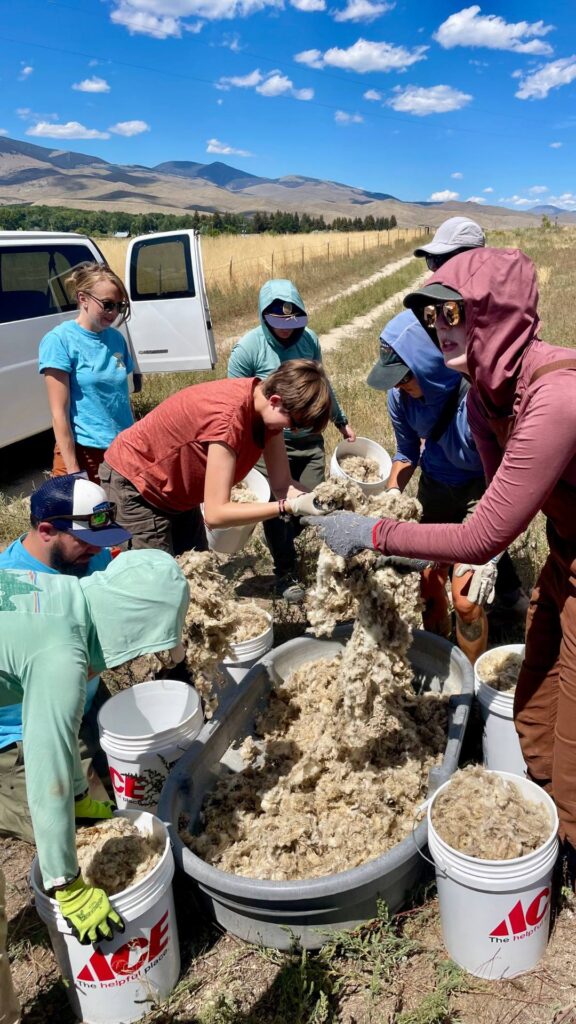
Wild Rockies Field Institute students hand gathered the seeds from a Bozoisky Russian wildrye stand that Kalsta planted a decade ago as an experimental cheatgrass mitigation strategy. “It’s done the job well,” says Kalsta. “Bozoisky rye and downy brome, aka cheatgrass, grew up together on the Siberian steppes and Bozoisky outcompetes downy brome on our range.”
The wool does triple duty:
- Stabilization – keeps the seed where it’s placed in rock weirs and uphill from cheatgrass patches.
- Moisture retention – holds water longer to give seedlings a better start.
- Nutrition – slowly releases organic matter as it breaks down. (Wool is high in carbon and nitrogen.)
Because raw wool can carry weed seeds, Kalsta uses tags from sheep grazing irrigated pastures, because most seeds that find there way into the wool there won’t survive in drier restoration sites. Over time, as litter builds and soil is able to hold more water, native Great Basin wild rye can begin to establish — something he’s seen happen on past projects.
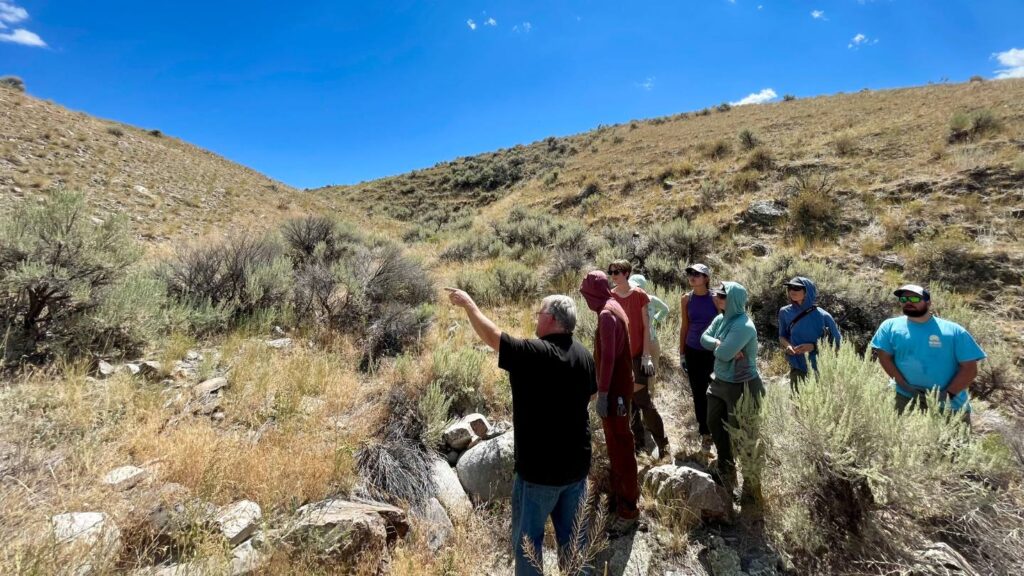
“I rely on those animals to work it into the ground with their movement and bedding behavior,” says Kalsta. “Elk, mice using it in nests, wood rats, jackrabbits, birds, and coyotes all take part in distribution and planting in my model, which may be why it takes longer and there are occasional surprise stands of Bozoisky.”
“It’s not instant,” Kalsta says. “When you’re trying to shift an ecosystem on a budget, you have to think in decades, not years or seasons.”
Do you have your own unique method for battling weeds or reseeding natives on your property? We want to hear it! Leave a comment below.
Sorry, the comment form is closed at this time.


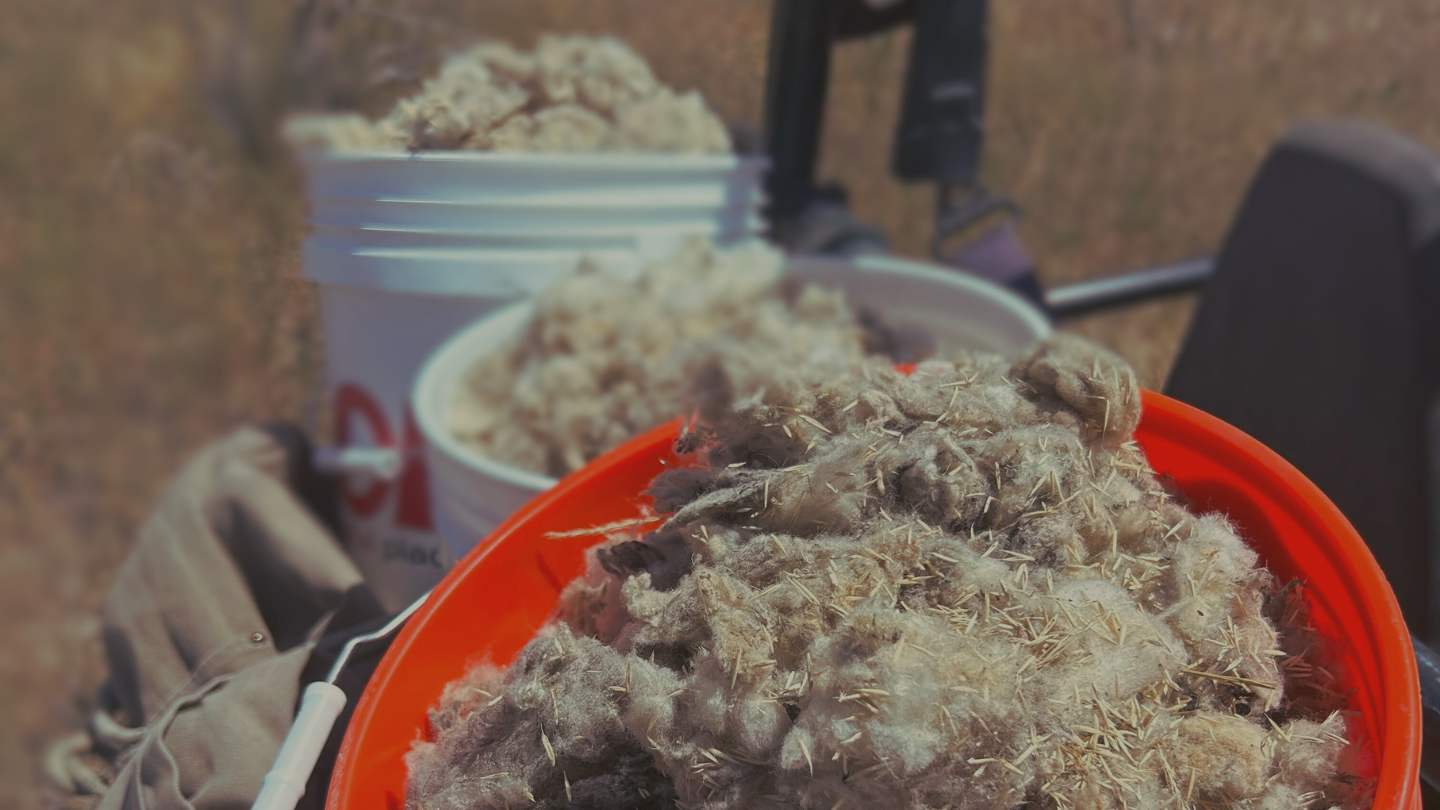
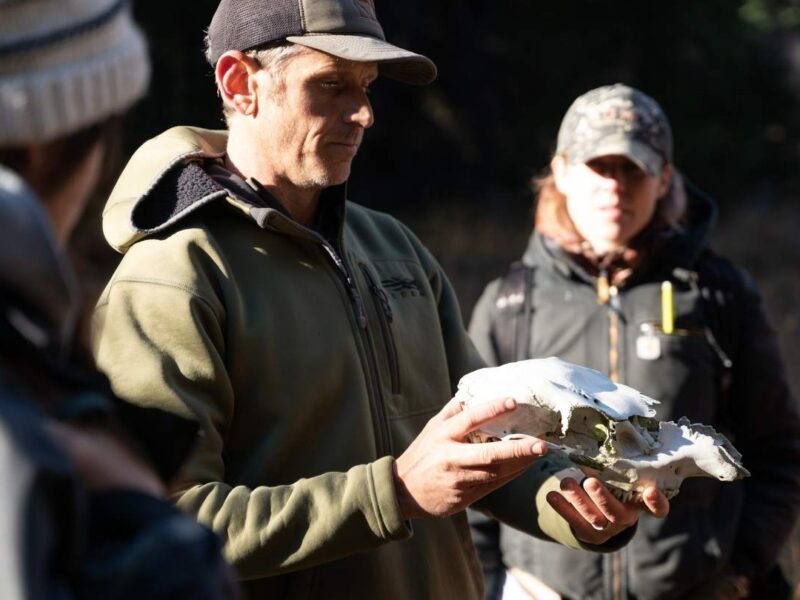
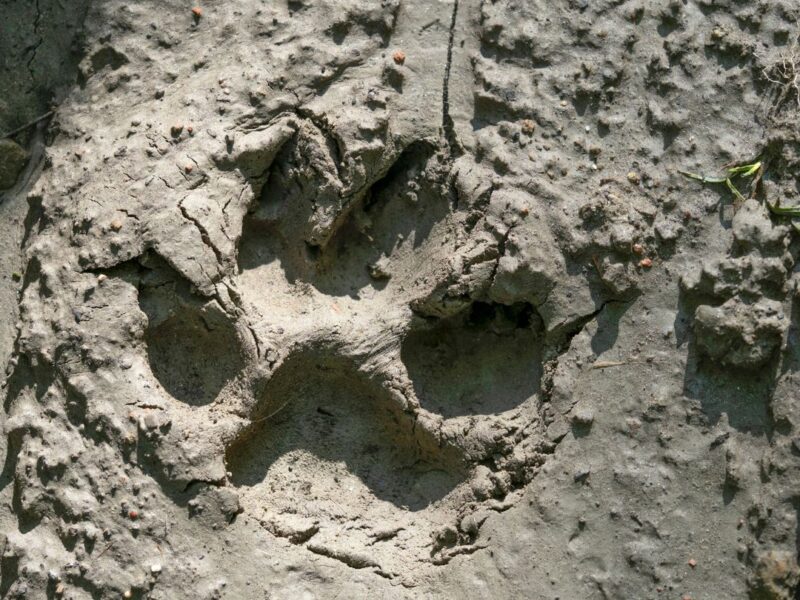

Jenny Kahrl
Cheatgrass grows where there is little organic matter. I have found on larger acreages, if I can feed my cattle heavily in that area, I can start to change the biology of the soil. The cattle leave behind compressed leftover hay, footsteps that create water holding spots, and they disturb the soil-sealing clubmoss which iss prevalent in these low carbon alkaline soils. It’s slow, and I often don’t see results for a couple of years. However, that heavy hay feeding during winter DOES start to change the plant ecosystem in those areas. Stored seeds have a chance to grow in the leftover hay, the disturbed club moss allows more rain to penetrate the soil, and even more seed germinate. Each time we increase organic matter, the ecosystem changes towards more diversity. And cheatgrass doesn’t like “better” soils. It thrives with low competition. As soon as we add in more diversity- like your wool and different seeds, cheatgrass sstarts to take a back seat.
Personnally, I’d rather let the livestock to the work, rather than spread wool clumps by hand. That seems pretty labor intensive- although I am sure the wool can be placed where a truck with a round bale can’t reach. All good ideas for increasing soil carbon.